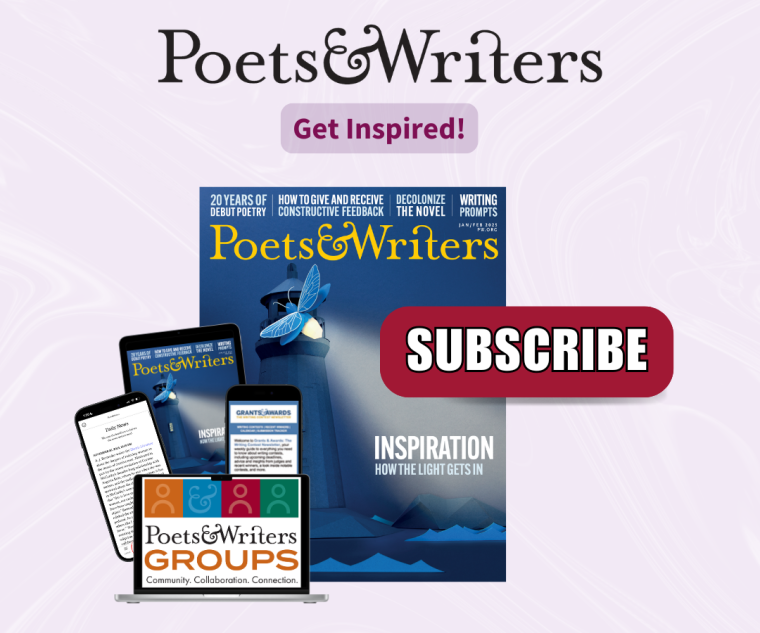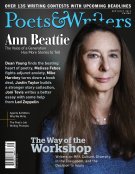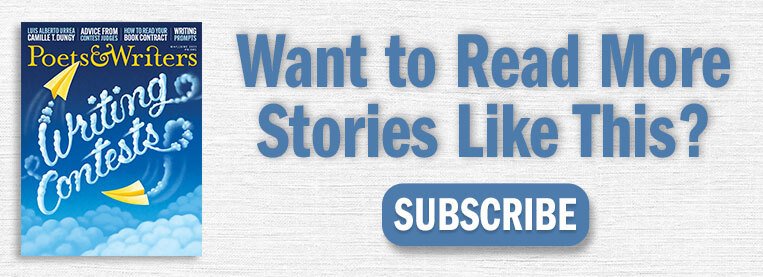Did you often find it necessary to have that kind of conversation?
My associate publisher and I felt it was important to help the sales reps frame the discussion for their customers—to talk to them about what was more universal and what was more specific to the community. Some books were for a black audience, like one called The Mocha Manual to a Fabulous Pregnancy, for black women who have different health risks in pregnancy. But my sweet spot was publishing black stories that were also universal stories.
I saw a Pew study about reading habits, from 2013, that touched on race. Sixty-seven percent of the Hispanic people surveyed had read a book in the past year, as compared to 76 percent of the white people and 81 percent of the African Americans surveyed. Do you have an opinion about why that diversity of readers isn’t reflected inside publishing houses?
Why are there not more people like me on the other side?
Right: Why might there be a dozen bearded white editors named Michael, and only one black editor named Dawn?
I cannot for the life of me figure that out. I don’t really know what else to say.
There is limited economic and geographic diversity in the industry as well, of course, and there are people who feel alienated just because they didn’t grow up in New York or come from wealth. But racial diversity? There’s even less.
I agree, and of course I might’ve felt some of that isolation you’re describing—even solely in terms of cultural references. If everyone else comes to the table reading the New Yorker, and you’re from L.A. skateboard culture, went to school in Hollywood, and didn’t grow up reading the New Yorker—there can be moments of “Do I belong at the table?” that may keep some people away.
Why aren’t there more people who look like me? Many black women have left and are no longer at a mainstream house. I can think of half a dozen in the past six years. Yes, I felt isolation, but just kind of powered through it. I’ve also had amazing mentors like André, who went out of his way because he thought my perspective would add value, and Marty, and I pay homage to them.
At Amistad I took great pride in knowing that the publisher, the associate publisher, and the publicist were three black women empowering our authors. We loved that.
I’m embarrassed to say it, but I don’t think I know any African American literary agents.
There are not many. Marie Brown has been doing it for a long time. She used to be an editor and she knows both sides. Faith Childs is a former attorney who’s been doing it for decades; she’s outstanding. There’s a young woman named Regina Brooks, who has her own agency called Serendipity. And the late Manie Barron went from sales to editorial to working as an agent. So there have been some, but it’s pathetic.
Sometimes I’ll go out to lunch with an agent and talk about, I don’t know, skiing in Italy. And then the agent will go out with some World War II story where a guy saves the day by skiing across Italy, and say, “Oh, I didn’t think of you.” But that agent will send me a black thing that has nothing to do with anything, except that it’s black. I find that frustrating.
We all get stereotyped, of course. I’m probably more generous about it than not, because otherwise you can let it define you.
What else happened at Amistad?
I was having my two children. I had the affiliation with HarperCollins, but didn’t buy that much for them; the Amistad list and my kids were my full-time thing. Later I moved to Ecco when there was some restructuring at Harper, and I wanted to be aligned with a smaller imprint. I think that with smaller imprints, you have more flexibility to support your authors. If one of the books is a mega-success, you can use that to get other authors in the door, whether it’s co-op spending with bookstores, or publicity or marketing dollars. I felt that it was easier to have those conversations within the context of a smaller imprint. That was in effect for almost two years.
How did you come to start 37 INK?
I’ve always had these great mentors. I started with André, then it was Marty, and then the early team at HarperCollins, where Jane Friedman and Cathy Hemming were very empowering. At Amistad they told me, “This is your ship now. What are you going to do with it?”
Then an opportunity came to work with Judith Curr at Atria. I felt that there were so many changes in the marketplace that I could stay and continue doing what I was doing, or I could go work with someone like Judith, who’s fearless and willing to innovate. I could ride her coattails into this brave new world where people are discovering books through Twitter and other things we don’t know about yet. I could stay put and become rooted in doing things the old way, or I could get excited about new ways to reach readers.
Take Twelve Years a Slave, for instance. I had read that Brad Pitt had wrapped that movie. I’d read about it two years before it finally came out, and I tried to get the official cover for our edition, but they had gone with Penguin. I said to Judith, “We’re not going to get the official one, but I can’t help but feel that this film is going to establish this book as the classic that it should be. I’ve read the book, it’s beautiful, it’s fantastic, it’s eye-opening.” Without blinking an eye, Judith said, “Do an e-book. Don’t charge anything for it, and have a note that says, ‘Learn more about 37 Ink’ in the back.”
We ended up charging 99 cents; if people really want it, they’ll pay, and maybe there’s even a psychological effect that you value things more if you pay for them. We put a beautiful cover on it and got an introduction from one of my Amistad authors, Dolen Perkins-Valdez—and we sold over 200,000 copies. We spread the word about the book—it sheds light on slavery in America, which I find to be important—but it was Judith who said, “Let’s do this.” Even if it were a failure, in Judith’s eye it would still have some value. That’s why I moved.
What else are you excited about?
I published Dear Leader, which points to the breadth I hope to establish for the list. It’s about a North Korean spy who, once he found out the truth about what was happening there, fled to South Korea via China. It’s a story about the North Korean regime, but also a daring escape story and a great way into this puzzling country.
In the pipeline I am particularly excited about Gathering Blossoms Under Fire, the edited journals of Alice Walker. I was thrilled to be able to work with Jan-Philipp Sendker, who wrote a book called The Art of Racing Heartbeats. I’m publishing his new books, which are set in the new China and explore the hidden costs, psychological and otherwise, of all the progress there.
And I love the author updates I get from the journalist Josh Levin, who is working on a book called The Queen. It’s about a divisive, mythic political figure: the “welfare queen” who dominated so much of the discussion around race and class in the politics of the ’80s.
She was mythic, but not in the way one might predict. She’s proof that truth is stranger than fiction and is one of the most singular and strangely compelling female figures I’ve read about in ages. It’s very dramatic. The author sends me updates from whatever archive he’s buried in and I love it. Did you see it when it was on submission?
I did.
It’s fantastic. I’m so interested by that particular story, because it reads like Devil in the White City meets Destiny of the Republic. It’s true crime with a pulsating narrative—there’s a serial killer in it—as well as a meditation on race and how it’s all a construct.
Another book I am excited about is Never Caught. It’s the story of Ona Judge, a slave in the household of George Washington. When she ran away from the Washingtons, she chose freedom over an elevated kind of servitude, and though the president knew where she was, and even petitioned the governor of New Hampshire to return her, he was never able to recapture her. People are fascinated by the founding fathers. This doesn’t disappoint.
What are you doing at 37 INK that’s different from what you did at Amistad?
What I’m doing as an editor and publisher is the same. I am trying to buy stories that I am drawn to and passionate about, because I have to advocate for them from the moment they’re acquired until a year after they’re on the bookshelf. The only thing that has changed is how I interface with the people who are more on the marketing side, being open to their ideas about social media and how we find our readers. But most of my work is the same: editing and making a book the best it can be, and then advocating for it.
What have you learned over the last couple years of running this imprint that you wish you knew earlier? About yourself, your authors, the role of being an editor or publisher?
I’ve learned that despite all the new bells and whistles, there’s no substitute for giving the bookselling community time enough to read a book and get behind it. I was lucky the first book out, with The Butler. I arrived here in April. By July, Wil Haygood and I had a bestseller. It helped that the book was short—under 100 pages of text. People could read it. But for a novel or a grand work of narrative nonfiction, people still need time.
Is there a set of traits common to the most successful people you’ve worked with?
Edward P. Jones is just a beautiful writer, and his success is all about the quality of the writing. Steve Harvey’s one of the hardest-working authors I have ever met, very shrewd, and surrounds himself with shrewd people. He was willing to travel far and work hard to make his books a success. Dolen Perkins-Valdez is very hardworking. She communicated with her audience; no book club was too small. She went to writing programs, conferences, met aspiring writers. She put herself out there and did what we ask authors to do, which is find an audience, communicate with them directly, make them feel like they’re part of your team, and then they help spread the word for you.
Despite all the things that we tell authors to do, there has to be a book that you want to recommend to five other people after you put it down. It starts with the book no matter what. Without that it doesn’t matter how much you tweet. You’ll get one wave of publicity and then it’s over.
The first successes at 37 Ink had a film component to them. Is that something you think about explicitly?
I just got lucky. I had read 12 Years a Slave years before the film came out, so I knew the story. A friend in the film industry saw an early cut and said, “I’s going to win everything.” It was in the public domain and the timing was right. I acted on my instincts.
The Butler was a little bit more of a risk because I signed it up before I’d seen the movie, though I had read the script. I thought the cast was great, and also I saw it as a small metaphorical story about a bigger kind of American journey. One thing that Judith has taught me is that it’s okay to take risks. I’ve really been kind of cautious, and that’s a piece of my education that was missing. Particularly in this environment, you have to try new things.
I used to take everything so personally. If something didn’t work I would be so upset on behalf of my author and on behalf of the imprint. But the old ways will not work anymore.








